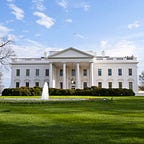Introduction
It took nearly two years.
The United States and the world’s major powers — the United Kingdom, France, Germany, China, Russia, and the European Union — and Iran sat around the negotiating table month after month, negotiating every detail that would inch us ever-closer to delivering on a promise President Obama had made before he first took office. Then, on July 14, 2015, with a shared commitment to peace, the United States and our international partners announced we had secured a nuclear deal that would achieve the necessary: Verifiably prevent Iran from obtaining a nuclear weapon.
It’s an historic deal — a promise fulfilled. It blocks every possible pathway Iran could use to build a nuclear bomb while ensuring — through a comprehensive, intrusive, and unprecedented verification and transparency regime — that Iran’s nuclear program remains exclusively peaceful moving forward.
It’s called the Joint Comprehensive Plan of Action (JCPOA), and it’s important that everyone understands exactly what’s in this deal and how it’ll work. That is why we have provided all 159 pages of the JCPOA here with commentary from the people who negotiated it and will help implement it. In the following pages, Secretary of State John Kerry offers insight into the diplomatic history and credibility this deal has within the international community. Secretary of Energy — and nuclear physicist — Ernest Moniz provides details on how certain restrictions will gut and retool Iran’s nuclear program to prevent it from creating a bomb. Treasury Secretary Jack Lew, who will lead implementation of the sanction provisions in the JCPOA alongside Secretary Kerry, outlines how phased sanctions relief for Iran will work and what will — and will not — be subject to relief after Iran meets its key nuclear-related commitments.
These are important details — the features that make the JCPOA one of the strongest and most significant nuclear arrangements in history. With this deal, we eliminate the threat of a nuclear armed Iran, strengthening our own national security and that of our allies in the region, including Israel. Without it, we risk another conflict in the Middle East. Without it, we risk war.
“Years ago when I left college, I went to war. And I learned in war the price that is paid when diplomacy fails. And I made a decision that if I ever was lucky enough to be in a position to make a difference, I would try to do so. I believe this agreement actually represents an effort by the United States of America and all of its colleagues in the P5+1 to come together with Iran to avert an inevitability of conflict that would come were we not able to reach agreement. I think that’s what diplomacy was put in place to achieve, and I know that war is the failure of diplomacy and the failure of leaders to make alternative decisions.” — J.K.
That is why he, Secretary Moniz, Secretary Lew, and President Obama have been so dedicated to finding a strong diplomatic resolution that prevents Iran from obtaining a nuclear weapon. And that’s exactly what the JCPOA does.
Read the JCPOA for yourself, and take a look at what negotiators and Administration officials have to say about how it will work. When you do, you’ll see exactly why it’s the cornerstone of a safer, more secure world free from the threat of a nuclear armed Iran.
You’ve just read:
Introduction
Read Next Section:
Joint Comprehensive Plan of Action
